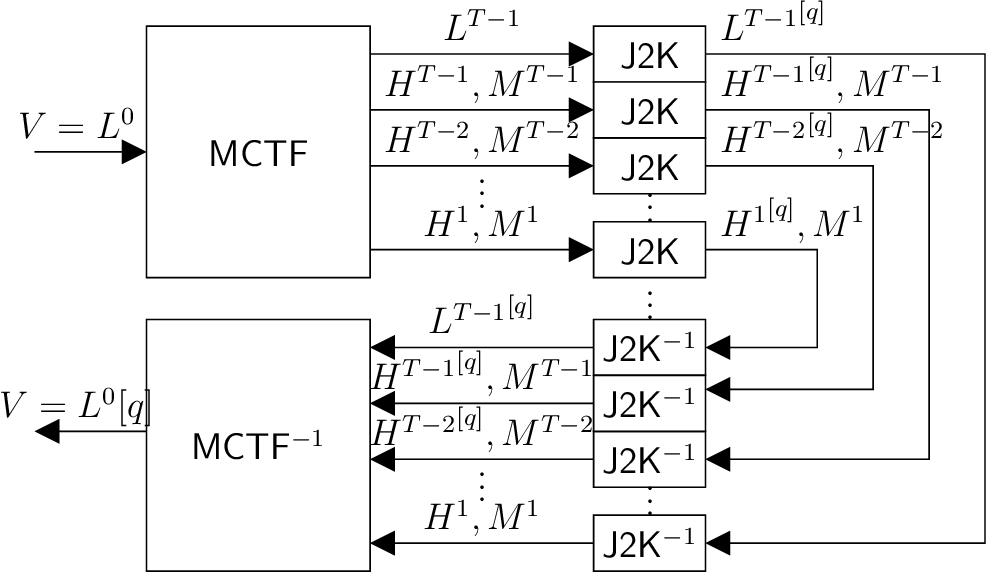

 | (1) |
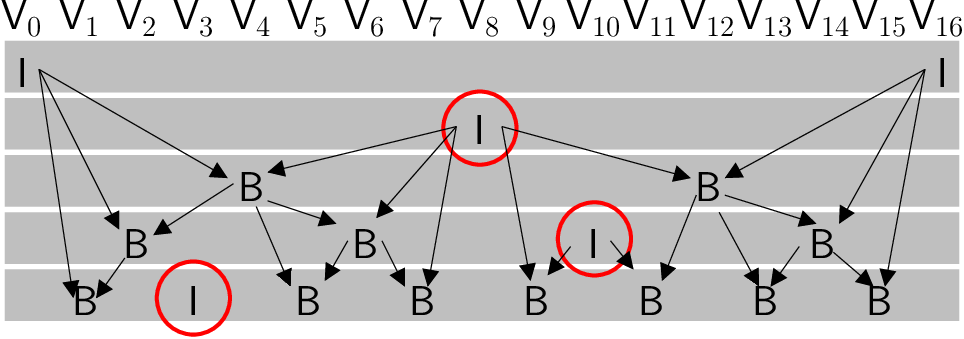
 | (2) |
and where Ht is the residue subband and Mt the motion information.
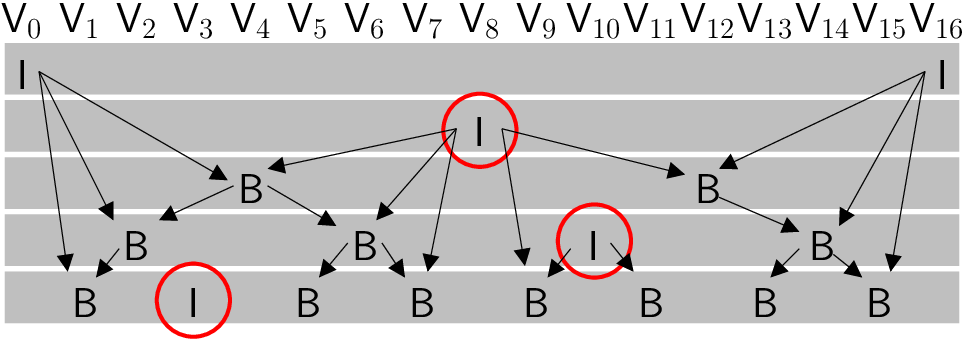
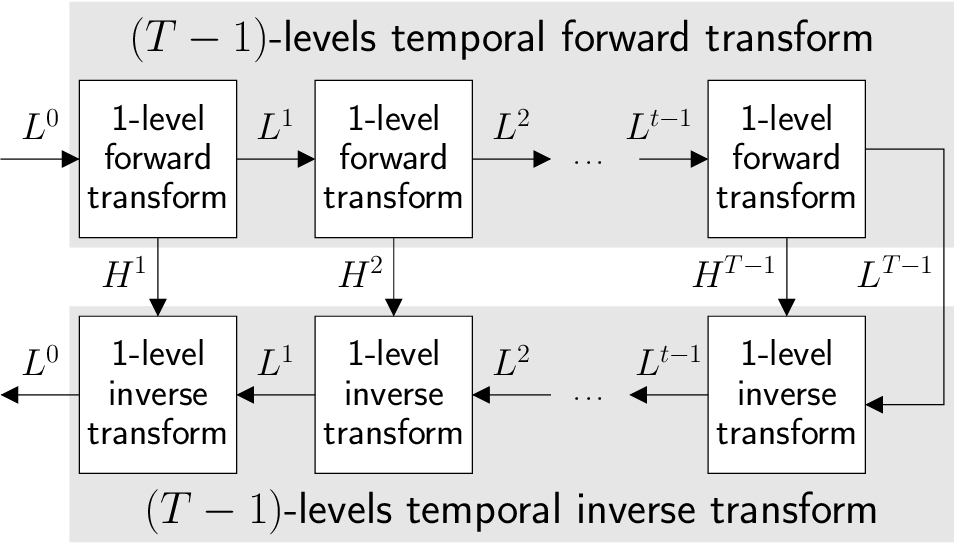
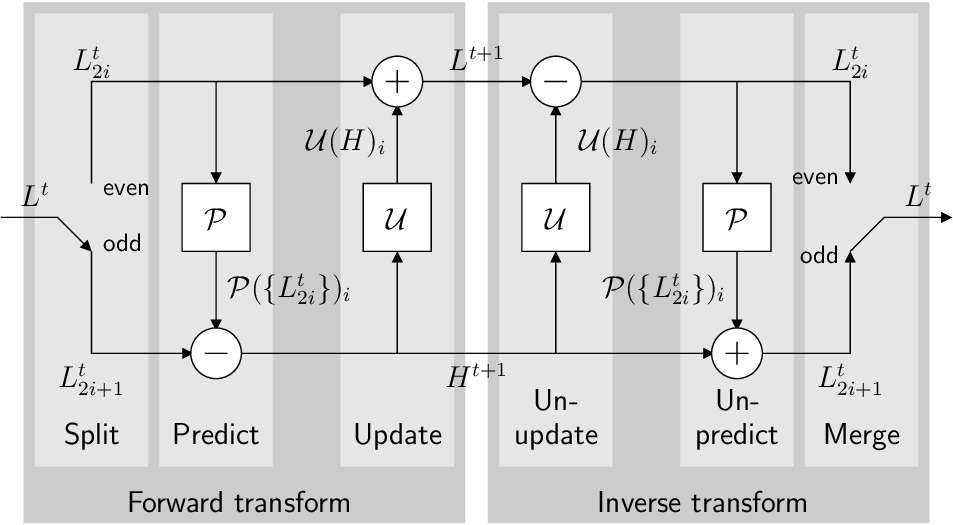
MCJ2K uses an hierarchical motion estimation algorithm that, alghought is sub-optimal, is fast enought for real-time coding:

 l(Mit) ← 0 /* Or with other more suitable values */.
l(Mit) ← 0 /* Or with other more suitable values */.

 l(P) in blocks of b-size and (±1)-search them
into the subbands
l(P) in blocks of b-size and (±1)-search them
into the subbands 
 l(R0) and
l(R0) and 
 l(R1), calculating a low-resolution
l(R1), calculating a low-resolution

 l(Mit) bi-directional motion vector field.
l(Mit) bi-directional motion vector field.

 l(Mit),
l(Mit), 
 l(P),
l(P), 
 l(R0) and
l(R0) and 
 l(R1) computing the
inverse DWT one step (the HH-subbands are 0).
l(R1) computing the
inverse DWT one step (the HH-subbands are 0).

 l(Mit) ←
l(Mit) ←
 l(Mit) ⋅ 2.
l(Mit) ⋅ 2.
Let s the sub-pixel accuracy. After the over-pixel ME stage, the refinement of Mit continues following the next algorithm:

 −l(P),
−l(P), 
 −l(R0) and
−l(R0) and 
 −l(R1) computing the inverse
DWT one step (the HH-subbands are 0).
−l(R1) computing the inverse
DWT one step (the HH-subbands are 0).

 −l(P) in blocks of b-size and (±1)-search them
into the subbands
−l(P) in blocks of b-size and (±1)-search them
into the subbands 
 −l(R0) and
−l(R0) and 
 −l(R1), calculating a sub-pixel
accuracy Mit bi-directional motion vector field.
−l(R1), calculating a sub-pixel
accuracy Mit bi-directional motion vector field.
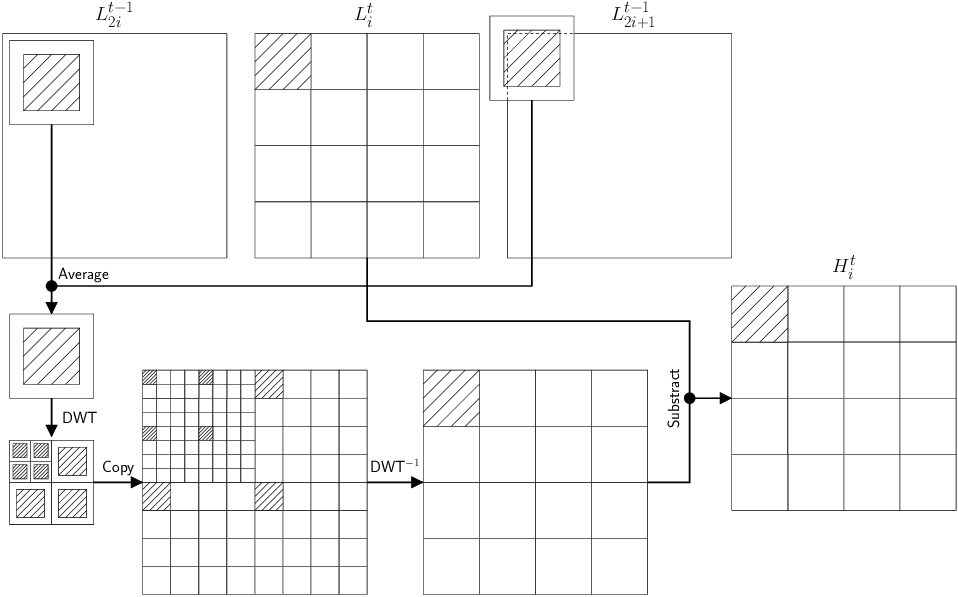
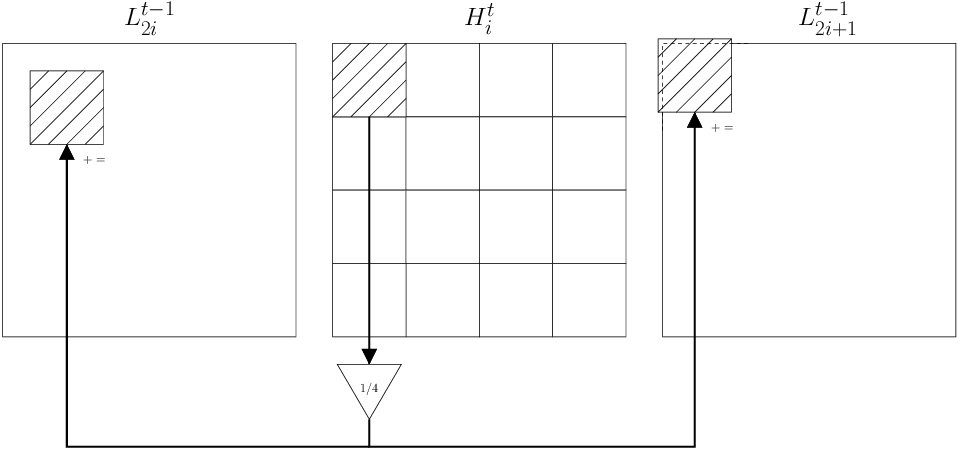

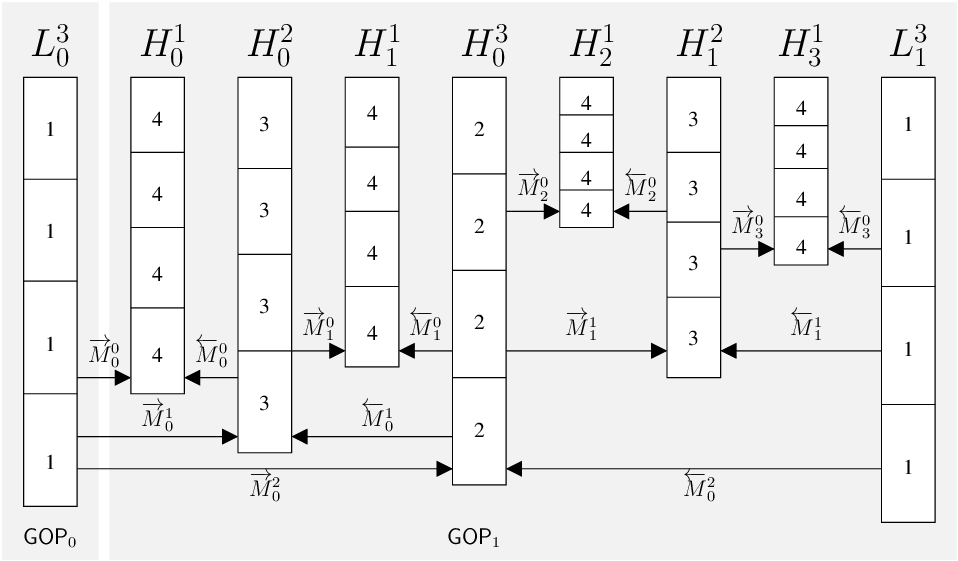
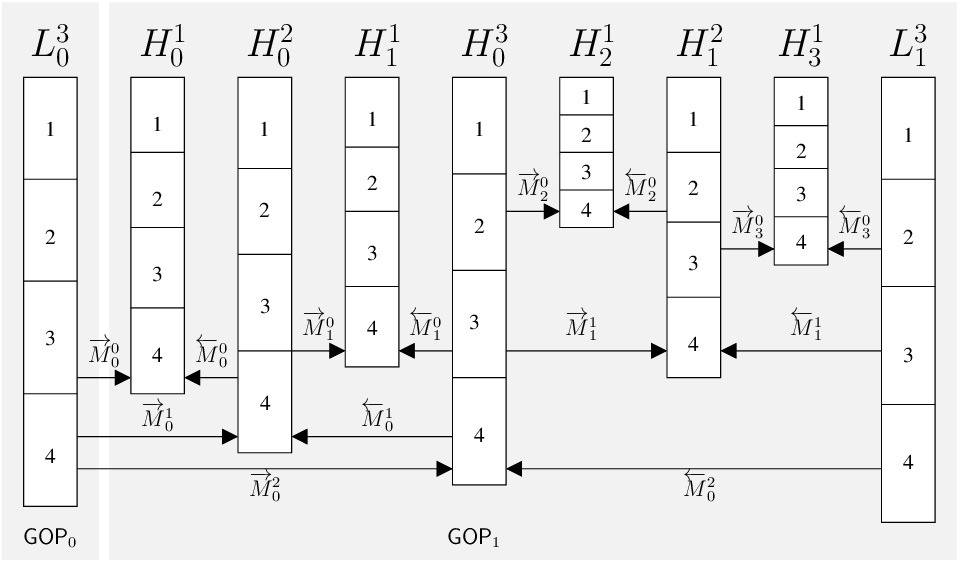

[1] S. Mallat. A Theory for Multiresolution Signal Decomposition. IEEE Trans. on Pattern Analysis and Machine Intelligence, 11:674–693, 1989.
[2] Heiko Schwarz, Detlev Marpe, and Thomas Wiegand. Overview of the scalable video coding extension of the h.264/avc standard. IEEE Transactions on Circuits and Systems for Video Technology, 17(9):1103–1120, September 2007.
[3] A. Secker and D. Taubman. Lifting-based invertible motion adaptive transform (limat) framework for highly scalable video compression. IEEE Transactions on Image Processing, 12(12):1530–1542, December 2003.
[4] W. Sweldens. The Lifting Scheme: A new Philosophy in Biorthogonal Wavelet Constructions. In Proc. SPIE, volume 2569, pages 68–79, September 1995.
[5] W. Sweldens and P. Schröder. Building Your Own Wavelets at Home.